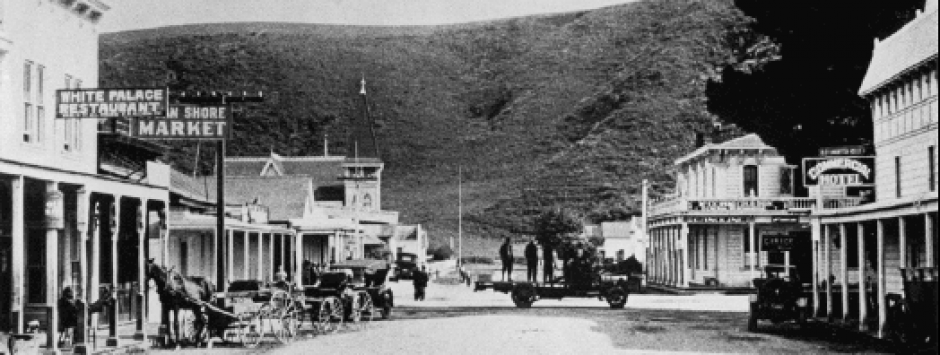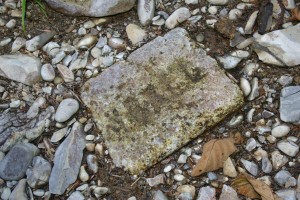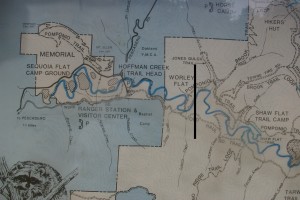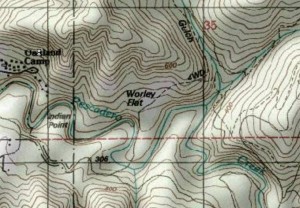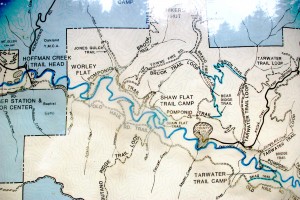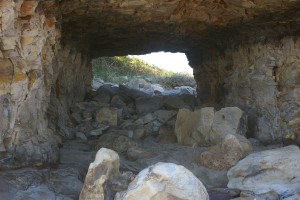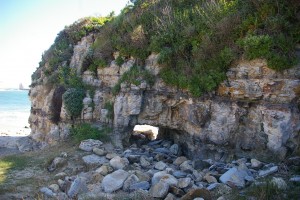[Image: The partial brick John found. How did it get to the South Coast?]
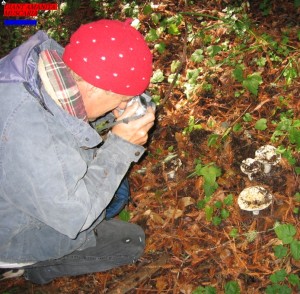 Story/Photo by John Vonderlin
Story/Photo by John Vonderlin
Email John ([email protected])
Hi June,
Do you remember my posting that included a photo of a partial brick I had photographed in the gravel of Gazos Creek the day of Mike Merritt’s guided history walk in late August? Only little more then half a brick, with an imprint including a partial letter followed by the letters B A L L. Hoping to find out something about it, I emailed a brick collector’s website that encouraged questions. Unfortunately, the email I sent was from a master account on my computer, and I forgot to check that account for replies. So I missed the reply from Dan Mosier, an avid brick collector, and the helpful author of the excellent brick-oriented website. http://calbricks.netfirms.com/index.html Wander around this site for a few minutes and I’ll guarantee you’ll know more about bricks then anyone in your neighborhood. What Marine Debris is to me, bricks are to Dan.
Fortunately, Dan re-sent his missive recently. And I now know the partial brick is an antique archway firebrick, made in Derwenthaugh, Durham County, England, and probably shipped to California in the mid- to- late 1800s, as ballast in a ship that sailed the perilous 16,000 mile route around Cape Horn. Price upon delivery? Possibly free! Probably 10 cents. Certainly so cheap, that the Mid-Western brickmakers could not compete, when saddled with the prohibitive cost of overland transportation for just one-tenth that distance.
Even with all the facts I’ve learned about the remnant since Dan identified its manufacturer, it is still quite possible that it could have been used in the McKinley Mill in the 1870s, and then reused at the Gazos Mill in the early 1900s, as I had theorized in the “Strange Coincidence” posting.
Mr. Mosier was quite sure it was a SNOWBALL brick, made by the Snowball brother’s Derwenthaugh Fire Brick Works. When I looked at this photo on his website, so was I. http://calbricks.netfirms.com/brick.snowball.html An exact match.
Mr. Robert Piwarzyk, also an avid brick collector, whom Dan quotes on his website, has written a manuscript entitled, “The Laguna Limekilns: Bonny Doon.” An excerpt of that at http://www.santacruzpl.org/history/work/limefire.shtml explains the history of firebricks in California, particularly on our coast. And this helps to explain the possible usage dynamics that might have led to the SNOWBALL firebrick remnant being in the Gazos Creek. While his timeline and facts seem to support my multiple firebox use theory for the brick, he warns of the difficulty of interpretation of sites that have bricks. Then reiterates that with this quote , “…..Or, as more aptly stated in “Brick Bats for Archaeologists: Values of Pressed Brick Brands,” by Roger and Marsha Kelly: “…. Reuse of bricks is an important capability which may lead to ambiguous interpretations of chronology.” ”
Still, I’ve made up my story and I’m sticking with it. Enjoy. John
P.S. Mr. Mosier, also wrote an interesting email to me about the bricks used in the Pigeon Point Lighthouse, a subject that has had mystery and some controversy associated with it. He also suggested likely brickmakers for both the distorted bricks I posted a picture of a while ago and the bricks used in “Limey Kay’s” house. More on this soon.
Real soon. This is an excerpt about SNOWBALL firebricks by Mr. Piwarzyk in his manuscript.
“Comments: Several letter sizes and styles are known. Also comes in arch and wedge shapes. Noted in Kelly’s Directories Ltd. 1935. Have been found at five limekiln sites in Santa Cruz. Two fragments of this brick having a backward “b” (i.e. rotated) were found at the Laguna limekilns.” Hmmm. Dyslexic or drunk brickmakers? Or bored, rebellious workers? Good thing I didn’t work there. Though I’m sure future brick collectors would prize my clandestine efforts.
By the way I was able to find some of the Vital Statistics about the Snowball brothers. They were both listed as coalminers when they got married. I wonder if their wives had anything to do with their career change. Women and coal dust are not immiscible, but form a very unstable compound. Bricks? They are forever.
